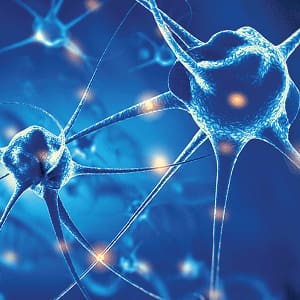For Your Health

© Maha Heang 245789 / stock.adobe.com
A shingles story
Learn what you can do to minimize your risk of this painful virus
by Joanne Ellis
When Nancy Nash found a dime-size scab on the back of her leg, the active 55-year-old from Georgia thought she’d been bitten by a spider. “The spot was itchy and irritated. The scab just wouldn’t go away,” Nash recalls. So she visited her doctor, only to find it wasn’t a spider bite at all; to her surprise, it was shingles.
Like Nash, an estimated 1 million Americans develop shingles, also called herpes zoster, every year. It’s caused by the reactivation of the chickenpox virus, varicella zoster, which many Americans carry. In fact, more than 99% of Americans born before 1980 have had chickenpox, even if they don’t remember it, and are carrying the virus that causes shingles.
Shingles breakout
Shingles are a rash, often on the chest or neck, that is made up of painful red blisters. The rash usually breaks out along the distribution of a nerve root called a dermatome, on one side of the body.
According to the Centers for Disease Control and Prevention, almost one in three Americans will have shingles during their lifetime, and the chances of getting shingles and the severity increases after age 50.
The virus can be reactivated or triggered as nerve pain and shingles at any time, but especially during times of stress or with a weakened immune system. The nerve pain that shingles cause can strike at any time, and anywhere on the body, including the face, mouth, torso and even around or in the eyes, and can also affect the inner ear and sense of balance.
The National Institute on Aging describes the first signs of shingles as burning or tingling pain, sometimes including numbness or itching on one side of the body. After one to five days, a red rash appears and a few days after that, the rash turns into fluid-filled blisters. These blisters eventually dry up and crust over, and the scabs eventually clear.
Prevention and treatment
There is no cure for shingles. Once you have it, it must run its course. Most sources estimate that the recovery time is three to five weeks; however, for some, it can take several months. Your doctor may prescribe pain relievers or suggest cool compresses or lotions. In some cases an antiviral may be prescribed to help lessen the symptoms and reduce nerve damage.
Shingles have made sufferers wince at the lightest layer of clothing touching their blisters and breakout area. After the shingles rash goes away, some people are left with ongoing pain, known as postherpetic neuralgia (see “Beyond shingles”).
If you’ve never had chickenpox, be careful around someone who has been diagnosed with shingles, because it can be transmitted through direct contact with fluid from the blisters. The person remains contagious until the blistering rash crusts over.
Shingles vaccine
Thankfully, there is an effective vaccine, called Shingrix. It helps the body build its protection against shingles. (See “Protect yourself,” below.) Some or all of the cost may be covered by Medicare and private health insurance plans.
Nancy Nash was lucky and recovered quickly from her outbreak. She’s fully vaccinated now and hopes others learn from her painful experience.
Protect yourself
“For those over 50, I always highly recommend getting vaccinated to avoid shingles in the first place,” explains Dr. Yinka Akin-Deko, a family physician in Halifax, Nova Scotia.
The recommended vaccine, Shingrix, helps the body build its protection against shingles. It’s a two-dose vaccination, administered two to six months apart. To maximize protection, both doses are recommended.—JE

© Giovanni Cancemi / stock.adobe.com
Beyond shingles
According to the Centers for Disease Control and Prevention, about 10% to 18% of people with shingles develop a chronic pain syndrome called postherpetic neuralgia. This ongoing condition is often described as burning or stabbing pain, sometimes with an altered sensation response to stimuli.
Dr. Yinka Akin-Deko, a family physician in Halifax, Nova Scotia, sees it in her patients and says, “Nerve pain can be very debilitating. In some cases, even after the patient has recovered from the initial onset of shingles, they still suffer from the nerve pain. We don’t know why.”—JE
Joanne Ellis is a freelance writer in St. Margaret’s Bay, Nova Scotia.
Costco Connection: Costco Pharmacy offers Shingrix vaccinations. Check with your local Costco Pharmacy for details and to book your two vaccination dates.



